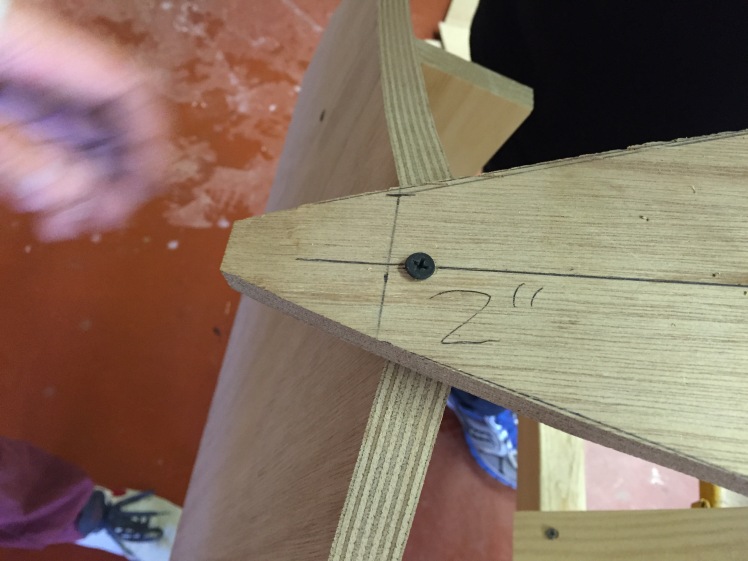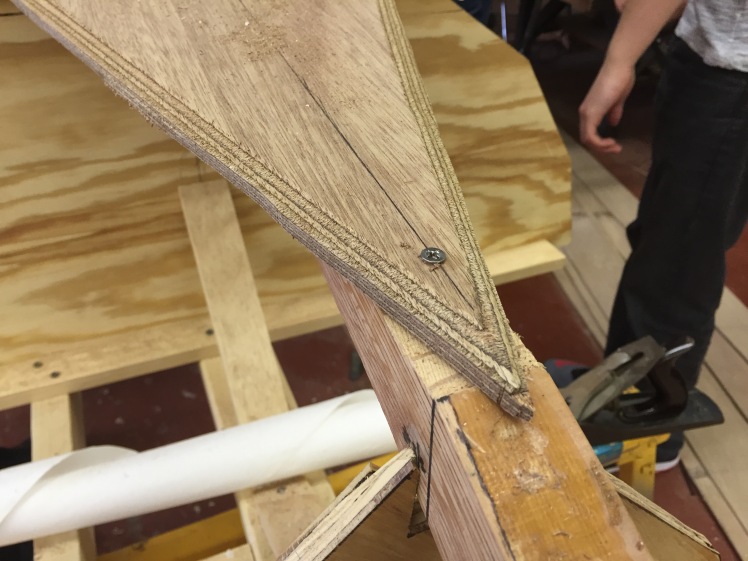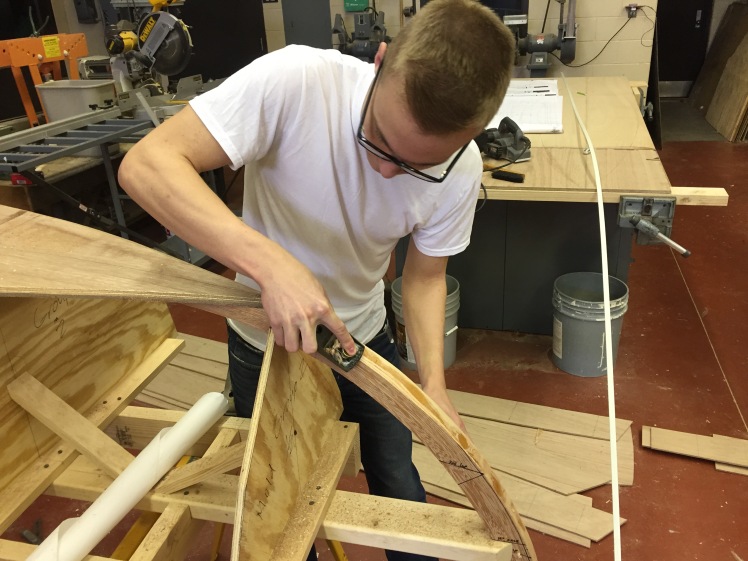As we planned last week, we started to put the hull planks on the ladder frame. Comparatively, planking is the slowest process we have ever dealt with. Up to Thursday, we only worked on the bevel of the bottom panel. Hand plane and electric plane are two primary tools we used on the bottom panel. After using these two tools, I figured out that they have different advantages. Electric plane can take off materials at a fast rate, however, it cannot reach some narrow spots where bottom panel and frame stations attach to each other. Hand plane does good job in covering all the surface, including those narrow spots, but sometimes it creates inconsistent surfaces.
Before going into some details of planking, let’s talk about what we have done before planking. Double checking all the measurements, making sure that all the stations are in their intended positions. Then, we put the bottom panel on the frame and line it up with five stations( Ps. Five stations include the midship frame, stem piece, transom, and two other nameless frame that will be eventually taken off). However, we had some troubles with lining up the bottom panel. The plan does not indicate how the bottom panel is supposed to be fit on the frame, nor the book “How to Build the Shellback Dinghy” by Eric Dow. So what we did was simply line up the bottom panel with transom and put a nail through it to the transom. By the way, the two inches line on the bottom panel ought to line up with the outer edge of the transom, just as the picture below shows

Unfortunately, the two inches line is the only line that can be lined up with one of the stations. So after drilling the screw into the transom, we kept pivoting the bottom panel slightly by eyeballing it, until the bottom panel fits on all four stations. Then we put another screw through the panel into the stem.

The bottom panel was attached to the frame up to this step. The next step was create bevels on the panel and the stem. By doing so, we create nice contact surface between the bottom panel and hull planks. Compared to tapering a sheet of plywood, which gives us a certain angle, taper the bottom panel is more freely. The bevel angle is customized, you can always adjust it as long as you still have materials to take off. However, it is not easy to get the perfect bevel.


Hope you enjoy reading our blog! We will see you next week!